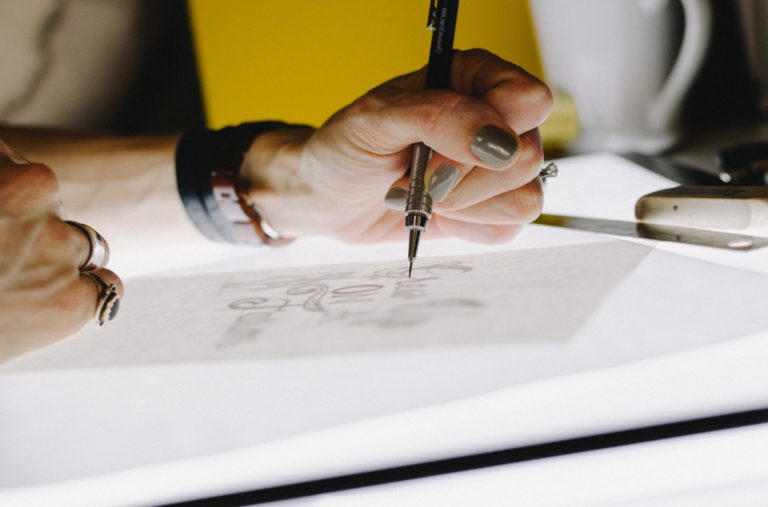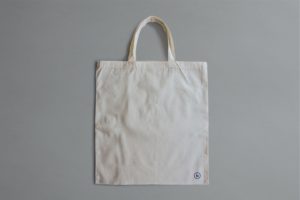A product is a thing created by the effort of a person or company that is offered for sale. This definition of a product also encompasses concepts, designs, drawings, patents, and any information required for its development.
The term “product development” refers to the process of generating this information and making it available to consumers so they can purchase our creations. The final result comes in a product, which is physical or non-physical.
Five main tools are used during this development process: sketches, technical drawings, prototypes, mockups, and models. Each one has specific purposes within the sequence that leads to success. Doing an effective job with each of them allows for a product to be what the customer wants while maintaining good profitability margins.
Sketches
Sketches are generally done by hand on paper or whiteboards. They make initial concepts visible and presentable. this is before moving towards executing more expensive elaborative steps.
All existing ideas are presented here at any stage during development. Sketches allow exploring creative process, and hence, new ideas for improvements can arise.
Once you make a sketch, present it to the client and ask for feedback. From their point of view, presentable sketches are helpful. Clients don’t understand code. Designers and developers might require additional details to work with.
Therefore, presenting your sketched concept lets them absorb the information better than just explaining its functionality.
Sketches are also great to test if an idea will work in real life. With tools like Sketch Mirror, you can share those sketches as an interactive prototype on any device or as a demo video.
This helps to continuously validate ideas before fleshing them out into high-fidelity mockups. Mockups require more effort from both designer and developer.

Technical drawings

These are used after sketches are developed and optimized. This tool is used to communicate ideas and requirements with other members of the product development team and external suppliers.
Technical drawings must contain all necessary information about a concept before moving towards production.
This is an important step because production without the necessary information means higher development costs, sub-optimal quality of the final product, and higher material costs. The main purpose of technical drawings is to represent all essential elements in the development process. Technical drawings contain plan views, sectional views, exploded views, orthographic projections, or any combination of these views to convey depth and dimensional relationships required by a design solution.
Prototypes
The purpose of prototypes is to ensure that the product works as intended by simulating its most important features.
In essence, they allow for changes before the final design is produced. Prototypes are often created based on technical drawings since they already contain most of the required information. This step is also very useful for marketing purposes since a physical product enhances the customer experience.

In addition, the earlier prototypes are created in the design process, the more likely it is that additional features or changes are implemented. When creating a prototype create many different versions of the product and test them extensively to see which one works best. Take an existing product and adapt it to fit your needs.
Create Different Versions

Creating variants of the same product is usually better for projects at an earlier stage in the development process. It is unnecessary to start from scratch if you have a good idea about what works and what doesn’t.
Also, since so many variables are involved when making a new product, it’s very difficult to predict how everything will work out without actually trying it out firsthand.
To create your prototype, you can use whatever materials are available or affordable. Using simple construction materials lets you see if your design is feasible before investing too much time into something that might not work as intended.
Don’t forget that prototypes are representations of what you want to develop further. They are not perfect. There are always some changes. So, if you invest a lot of time and money trying to get all of the details right from the start, you might not have enough resources available to make changes when necessary.
The whole point of creating a prototype is to test it out. It’s easier and more cost-efficient to find out what works well with your product before everything has been created.
Once your design is complete, you can’t easily go back and spend additional time on anything that didn’t work as expected. While creating physical prototypes may seem like an expensive process, it can save you significant amounts of time and money in the long run if done correctly.
Mockups
Mockups are used as an extension of prototypes for marketing purposes. Their purpose is to provide our customers with a feel for the final product or visualize aspects that cannot easily be reproduced using a prototype.
Mockups are usually done on computer-aided design (CAD) software programs. Due to safety concerns or practical reasons, they are very useful when presented in large events where people can’t touch or hold them.
Once again, these tools make it possible for new ideas and concepts to arise before production starts.
Models
These are similar to prototypes, but they allow more freedom regarding changes since they have to meet the market’s reality and are more expensive. They are used for marketing purposes or presentations at conventions, congresses, or any other type of gathering where this type of tool is necessary. Each one has its purpose within the sequence that leads to success.
Takeaway
Product development is an important step in bringing a new product to the market. By understanding the different available tools, you can make the most informed decision about which tool will work best for your product.
The tools here are essential for product development success. Therefore, it is important to understand the different product development tools and how they are used to create a successful product. Peterman Design Firm can further talk to you about these tools and the processes needed for product development.
Your Next Steps
Related Conscious Design BLOG Posts
2 Tools you Should use with Your Developer
When working with a product developer, there are two types of programs you should be familiar with. While there are many options for each one, these two types of programs will help with communication between you and your developer. The first one is one you probably don’t have unless you work with people in 3D often, the other is common, but I’ve run into clients who didn’t use or were unfamiliar with them as well, mostly old school small businesses. 3D viewer You will need this for pretty much any physical product development anymore. While we might start out with sketches and PDFs, which you can make a 3D PDF too now, we quickly move into 3D now. Being able to view your developer’s 3D model from every angle, cross-sectioned, and hiding parts is essential to the review process. Many mid to high-end CAD packages have viewers that work with their software. It is also sometimes a good idea to ask your developer about simple CAD packages that are free/cheap that can open CAD files for you to review. We use SolidWorks primarily, and eDrawings is its free viewer. BLANK Ian Peterman, CEO Tweet File-Sharing Most people think of getting files from the developer, but it’s really a two-way street. You will want to send your initial documents to your developer, as well as feedback and other information in an easy way. Often these files are much larger than what an email can handle, so a file-sharing tool or service best meets these needs. There are many options here, far more than for the 3D viewers, so there is something for everyone. Setting up a shared “folder” with your developer where all files go to will keep things easy and straightforward for both of you and avoid losing any emails with files that you can’t find anymore. For this, we use Google Drive and Dropbox primarily. Talk with your developer, see what programs they use, and make sure everything is compatible. Good developers will set up file sharing through their preferred service, they pay for larger storage and more features than you would probably want to pay for. These tools, in addition to all the other programs and services we all use on an average day, will ensure you and your developer are able to communicate effectively. Your Next Steps Developing Smart Products What do you bring to a developer? Develop a Smart Product Modern Tools Tools of the Design World: Blender Blender Related Conscious Design BLOG Posts Author Mr. Peterman View all posts
Top 5 Ways to Maximize your Developers Potential
These are the top 5 things that have made projects easier to accomplish and more successful. Make sure you have these with your project to be as successful as possible.
Market Research – 3 Ways to Get It
Market Research is something that everyone should get when launching a new product. As we’ve talked about before in 5 Tips for Market Research & Analysis, there is quite a bit of information that you can get even from a low level Market Research done by people who know what they are doing. What we didn’t discuss was where and how to get this done for your product. Here are the three best ways to get Market Research for your business or product. Yourself This is the lowest cost way to do this if you do it right. I recommend that even if you hire a Firm or a freelancer to do it for you, you should spend a little time doing some yourself. If you catch something that is really bad or looks really great, you can tell whoever you hire about it, and they can confirm or contradict what you’ve found. There are tons of resources online about how to do market research, what things to think about, etc. Start there, and if you feel confident enough in your product, or business, then go for it. The downside of course is that while you can get lots of resources online and do it for “cheap”, it takes a lot of time and as it isn’t necessarily your day job, you are more likely to have mistakes and miss things than a professional. Hire a Firm The best guaranteed way to get all the information you need for your exact projects comes with a price. There are obvious benefits and drawbacks to hiring a firm rather than a freelancer to do the work. However, if you have the funds, a firm’s benefits outweigh their drawbacks, most of which is price. Firms usually have checks and balances to ensure the research provided is exactly as needed. With the additional financial investment comes access to better information and tools. It can also substantially speed up the process as opposed to doing this yourself. For those who may argue this, you have to include the amount of potential errors that will cause wasted time down the line. Both Marketing Firms and Design Firms can most frequently provide this type of service. Hire a Freelancer You might be surprised freelancers are listed here based on my post last year 3 Reasons you Should use a Firm and Not Just a Freelancer. However, they offer the balancing act that many startups need. I should know, I was a freelancer before I established the Peterman Design Firm. Established companies and funded startups look to Firms for help, but not everyone is in that position. While some firms can pull off the work at freelancer rates, they often can’t do it as fast. Freelancers are the in-between area that can benefit someone who’s tight on cash but know they need help. Freelancers skill can vary widely, as well as their cost and delivery time. As a single person they don’t usually have the benefits of someone double checking their work. They also usually don’t have the resources to put toward the best tools and databases for research. If you are bootstrapping, I highly recommend that you at least hire a freelancer to do some basic Market Research on your idea. Even if all they do is confirm how market viable your product is, it’s worth it. You’ll have extra confidence in moving forward. If you have the cash or are more established, spend the extra and do a more thorough Market Research process. Always remember to do a little research on your own. Doesn’t matter if it’s you, an intern, or someone interested in your success. Research before hiring a firm or freelancer will make your initial meeting more productive. That research will ensure you can bring up your concerns or questions to whoever you are hiring and let’s them address those for you. Author Mr. Peterman View all posts


